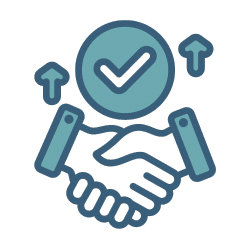
Teamwork Triumphs: How Cross-Functional Collaboration Sparks Innovation?
Add Your Heading Text Here
Add Your Heading Text Here
Why does innovation die when teams are not connected?
Each team brings a unique set of skills, experiences, and viewpoints to business. When these teams operate in isolation, they miss out on the opportunity to benefit from diverse perspectives. Without cross-team collaboration, innovation suffers due to limited perspectives, struggle to adapt to change, and lose alignment towards common goals.
Collaboration is more than just working together. It’s the fusion of skills, experiences, and perspectives to achieve more than what could be accomplished individually. It is crucial to innovation because it fosters an environment where ideas can be freely exchanged, refined, and combined, leading to the solutions.
Collaboration across teams means working together well. It’s important for teams to talk openly, share the same goals, and have different skills. Teams should be trusted to make decisions and given the right tools to work together easily.
Regular meetings help everyone stay on the same page, and it’s nice to recognize when teams do a good job working together. Leaders play a big role in making sure everyone gets along and works well together. When teams collaborate effectively, they can come up with great ideas and achieve their goals together.
Improving cross-functional teamwork and collaboration involves implementing specific strategies aimed at fostering communication, building trust, and aligning goals across teams. Here are some actionable steps to achieve this:

1. Establish Common Goals: Define clear and shared objectives that all teams can rally around. Ensure that these goals align with the organization’s mission and vision to create a sense of purpose and direction.

2. Promote Open Communication: Encourage regular communication channels between teams, such as meetings, emails, or project management tools. Foster an environment where team members feel comfortable sharing ideas, feedback, and concerns openly.

3. Clarify Roles and Responsibilities: Clearly define the roles and responsibilities of each team member within cross-functional teams. Ensure that everyone understands how their contributions fit into the bigger picture and how they can support each other.

4. Build Trust and Respect: Foster a culture of trust and respect among team members by valuing everyone’s input and acknowledging their expertise. Encourage collaboration by creating a safe space for sharing ideas and taking risks.

5. Encourage Cross-Training: Provide opportunities for team members to learn about other departments or disciplines through cross-training initiatives. This helps to increase understanding and empathy between teams, leading to better collaboration.

6. Use Collaborative Tools: Implement technology solutions such as project management software, communication platforms, or shared document repositories to facilitate collaboration and streamline workflows.

7. Facilitate Team Building Activities: Organize team-building activities or workshops that allow team members to get to know each other better and build stronger relationships. This can help to break down barriers and foster a sense of team spirit among team members.

8. Provide Leadership Support: Ensure that leaders actively support and promote cross-functional teamwork and collaboration. Leaders should lead by example, actively participating in collaborative efforts and providing guidance and support when needed.

9. Celebrate Successes: Recognize and celebrate achievements that result from cross-functional collaboration. This helps to reinforce the importance of teamwork and collaboration and encourages continued efforts in the future.

10. Seek Feedback and Continuous Improvement: Regularly solicit feedback from team members and stakeholders on how collaboration can be improved. Use this feedback to identify areas for growth and implement changes to enhance collaboration over time.
By implementing these strategies, organizations can create a culture where cross-functional teamwork and collaboration are valued and actively promoted, leading to improved communication, increased productivity, and better outcomes for the organization as a whole.
